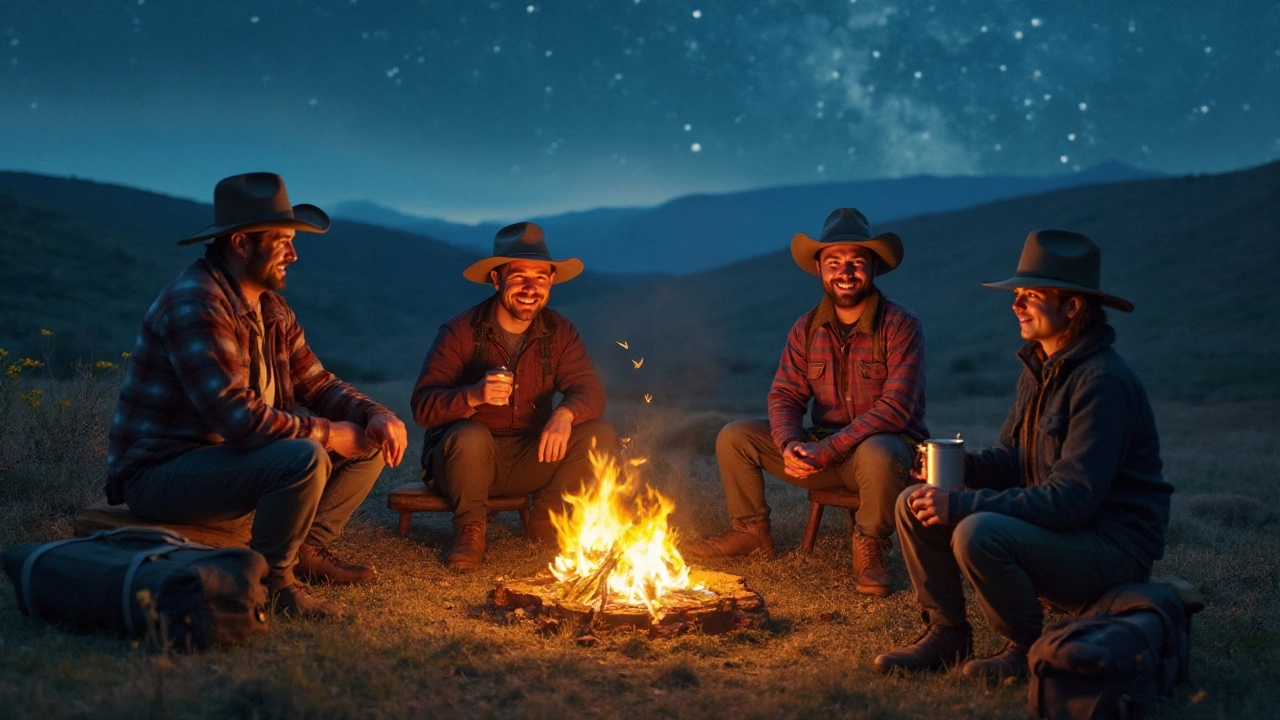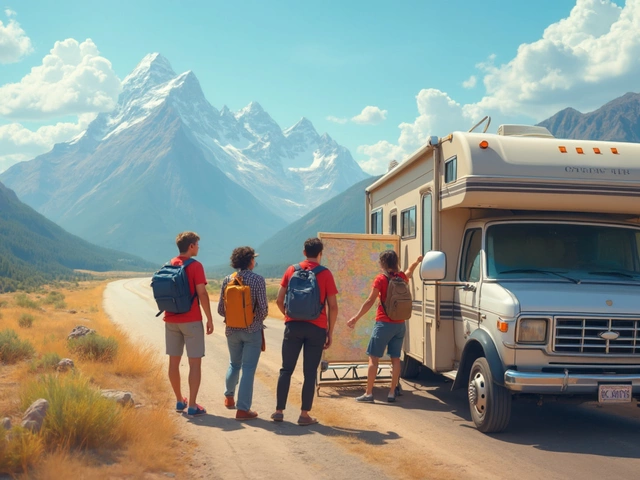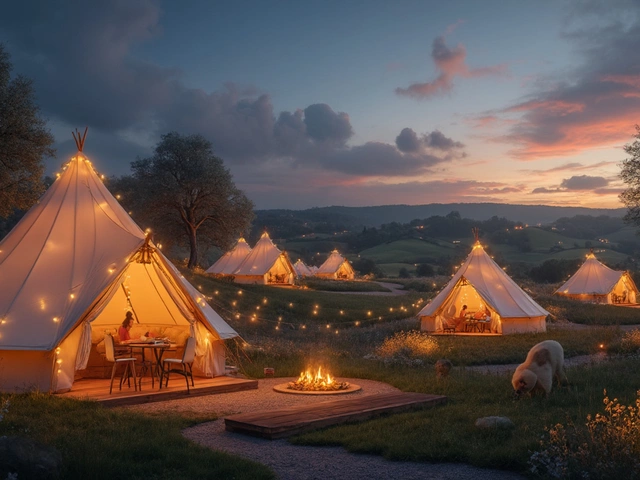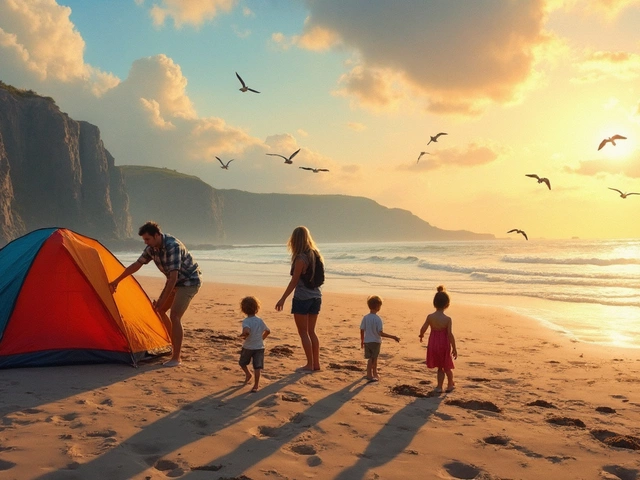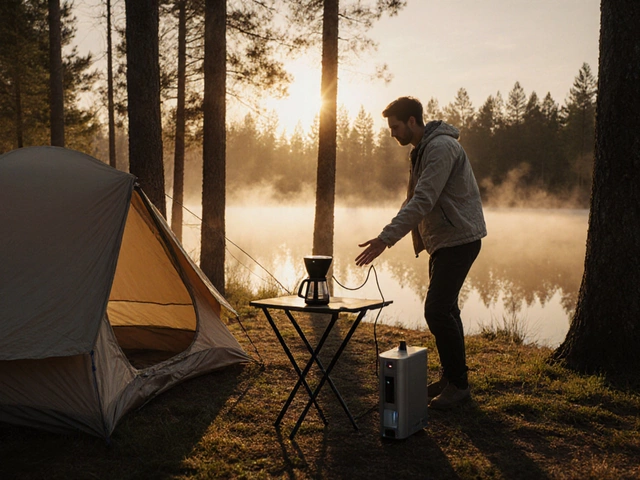Imagine falling asleep with nothing but the stars for a ceiling and the quiet buzz of an open landscape for company. No tent. No walls. Just you, your sleeping bag, and the night. This isn’t just a wild notion—it’s what they call "cowboy camping." Even though it sounds like something ripped straight from a black-and-white western, it’s a real, time-honored way to camp that’s made its comeback for modern adventurers who crave simple freedom. This guide spills all the beans: what cowboy camping really means, how to actually do it, and the little tricks that can turn your trip from uncomfortable to unforgettable.
What Exactly is Cowboy Camp?
Cowboy camp isn’t a fancy retreat in Montana or a themed activity for tourists. It’s as literal as it gets: you camp out in the open, without a tent or formal shelter, just like the ranch hands of the old American West. The idea started way before bug-proof mesh and pop-up domes even existed. Cowboys on long cattle drives slept out under the prairie sky to keep their gear light and their lives simple—but make no mistake, cowboy camping isn’t stuck in the past. Backpackers, hikers, and nature-lovers today often ditch the tent for the same reasons: a thirst for adventure, less weight, and a front-row seat to nature’s show.
The whole appeal rests on the basics. With cowboy camping, you’re not weighed down by tent poles, rainflies, or tarps—sometimes, all you’re carrying is a sleeping bag, a foam pad, and a few small essentials. You lay down wherever feels right, whether it’s a wide meadow, a rocky overlook, or a sandy patch near a lazy river. You get breeze without buzz, a sunrise without condensation dripping on your face, and, occasionally, a frost moustache or a dusting of dew. Part of the fun is in the challenge—learning to work with what nature gives you and being okay with a little dirt between your toes.
Why pick cowboy camping over traditional tent camping? For starters, it’s fast. Roll out your pad, kick off your boots, and crash. No dealing with tent poles that always seem to vanish or snap when you’re tired. You’re also lighter on your feet, which matters if you’re racking up the miles. Plus, you get unbeatable views: nothing between you and the Milky Way or that streak of orange as the sun cracks the horizon.
There’s also a special brand of quiet that only comes from cowboy camping. When you’re not zipped away from the world, you hear the night in full HD—the chirps, the wind in the grass, maybe even the distant bark of a fox. No humming tent fan, no flapping rainfly to muffle the real outdoors. It feels raw and honest, in a way that pulls you out of your own head and plants you smack in the middle of the wild.
Of course, there are trade-offs. Without a tent, you’re exposed: rain, wind, insects, and the odd curious critter. It takes some practice and a healthy dose of flexibility to get it right. Weather app obsession is almost guaranteed. But when conditions line up—low chance of rain, mild temps, manageable bugs—it really is a magic trick. The kind of sleep where you wake up grinning, a little cold maybe, but clear-headed and alive.
Is it legal everywhere? Not always. In the UK, wild camping rules vary by location, so always check before you roll out your mat. If you’re in a national park or nature reserve, get familiar with local guidelines. In the US, most national forest and BLM land allows dispersed cowboy camping, but always double-check for any local fire bans or wildlife advisories. One fun stat to chew on: in a 2024 survey of UK hikers, 38% said they’d tried cowboy camping at least once in the last three years. People love the connection it brings—just be smart about where and when you do it.
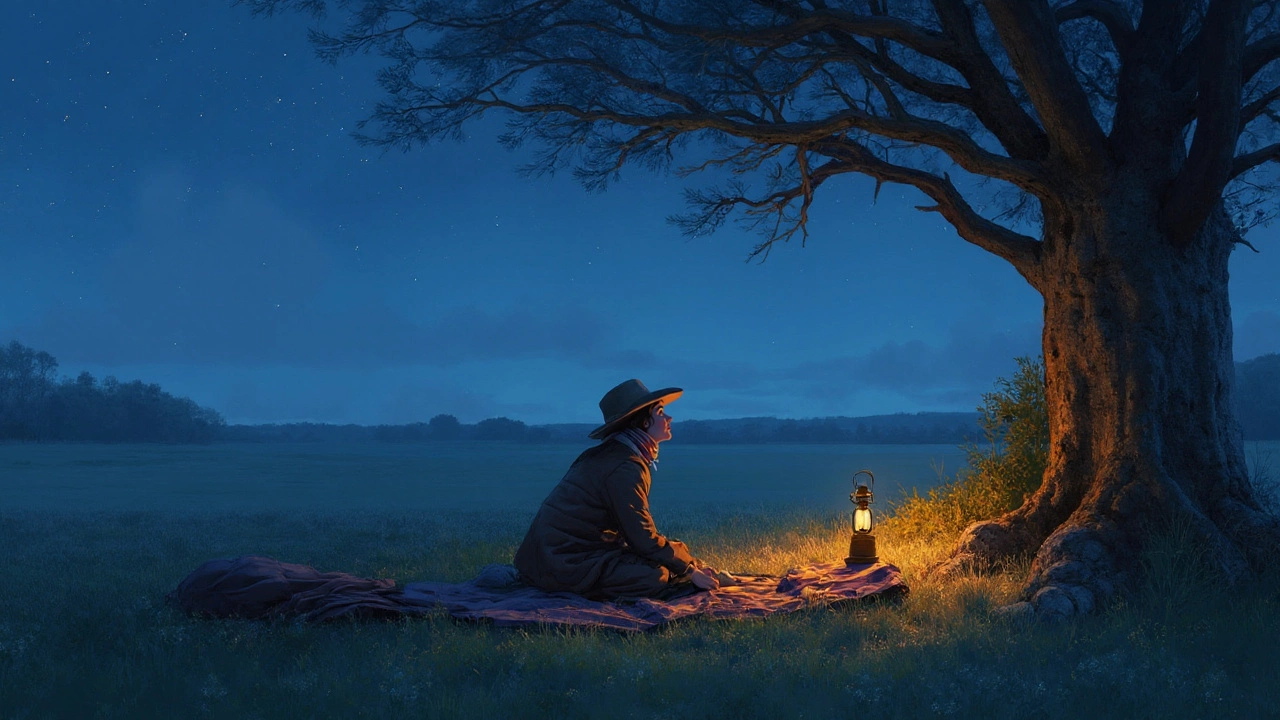
How to Cowboy Camp: Gear, Safety, and Smart Tips
Getting started with cowboy camping is simple, but a little know-how will go a long way. You don’t need fancy gadgets, but you do need a plan. First up: gear. At its heart, you’re boiling it down to three essentials—your sleeping pad (which insulates from the ground), a sleeping bag or quilt suited to the weather, and something to keep your stuff dry if a rogue cloud passes overhead. Bonus points for a bivy sack (think of it as a waterproof sleeping bag cover), but plenty of folks use just a pad and bag on clear nights.
Let’s break it down:
- Sleeping Pad: This isn’t just for comfort—it’s for warmth. Even in summer, the ground can steal your body heat. Choose a foam pad for durability or an inflatable one for better squish, but make sure it adds decent insulation (aim for an R-value above 3 if it’s chilly).
- Sleeping Bag/Quilt: Match the bag to the coldest temps you expect. A down bag is lighter and packs tighter, but synthetic can save you if things get damp. Some outdoor brands even sell specific "cowboy camp" quilts with a harder bottom fabric for open-air use.
- Bivy Sack (optional): These add a few degrees of warmth and shield you from dew, wind, and insects. Some are no more than a shell; others have mesh bug screens and hoop frames.
- Ground Sheet: A tough footprint or even a plastic painter’s sheet can shield you from wet or dirty terrain. Not glamorous, but your sleeping bag will thank you.
- Pillow: Inflatable, homemade, or just your pack stuffed with clothes—whatever keeps your neck from hating you at dawn.
Don’t skip the basics: headlamp, water, snacks, bug spray, a pocketknife, and your phone or a map. In bear country, store your food away from your sleeping area. In tick-heavy zones, wear long sleeves and socks to bed. Cowboy camping means you trade the illusion of control for the real deal—so pack your gear with the local environment in mind.
Next, where do you camp? Aim for high and dry spots, away from valley bottoms where cold and damp settle overnight. Avoid animal trails and riversides to dodge bugs and unexpected wildlife traffic. Use natural windbreaks like boulders or stands of trees—but watch for weak branches above (widowmakers, as the old-timers say). Conscientious campers always stick to established sites on heavily-used land to keep wild places tidy.
Check the weather before you go. If there’s the slightest chance of rain, stash a lightweight tarp or at least have a plan for cover. Dew can soak you through even on a clear night, so expect the bottom of your bag to get a little damp unless you use a bivy sack. Keep gear packed until bedtime, and roll out quick if you need to bolt during a surprise shower. Many repeat cowboy campers will say, the early morning sun dries out nearly everything—but on wet nights, you’ll wish you’d packed a cheap emergency blanket as backup.
One question people worry about: bugs. Depending on the season and location, mosquitos and midges can make cowboy camping miserable. Some folks use permethrin-treated clothing, others just tuck deep into their bag or toss a bug net over their face. In 2023, a group of Appalachian Trail thru-hikers who cowboy camped reported that mid-May and late August were the worst times for bugs, but breezy, open areas were more comfortable even during peak season. Learn your enemy, and don’t be afraid to bail to the tent if you must.
Now, about safety. Sleeping outside means trusting your surroundings. Look up—no dead branches overhead. Look down—no rocks, roots, or ant hills. Keep food far from where you sleep, especially in places with bears, foxes, or badgers. Be respectful of other campers and leave no trace: take every bit of rubbish with you. If you’re nervous, start cowboy camping with friends on a known trail or at a familiar campsite before wandering too far from home.
| Essential Gear | Purpose | Typical Weight |
|---|---|---|
| Sleeping Pad | Insulation from ground | 300–600g |
| Sleeping Bag | Warmth through the night | 700–1200g |
| Bivy Sack (optional) | Weather and bug protection | 300–500g |
| Ground Sheet | Extra moisture barrier | 100-200g |
| Pillow | Neck comfort | 50-200g |
Finally—don’t forget stargazing. Download an app to identify constellations or planets before bed, or just lie back and see what you can spot. The best cowboy camps leave you closer to the universe and miles away from your phone’s notifications.
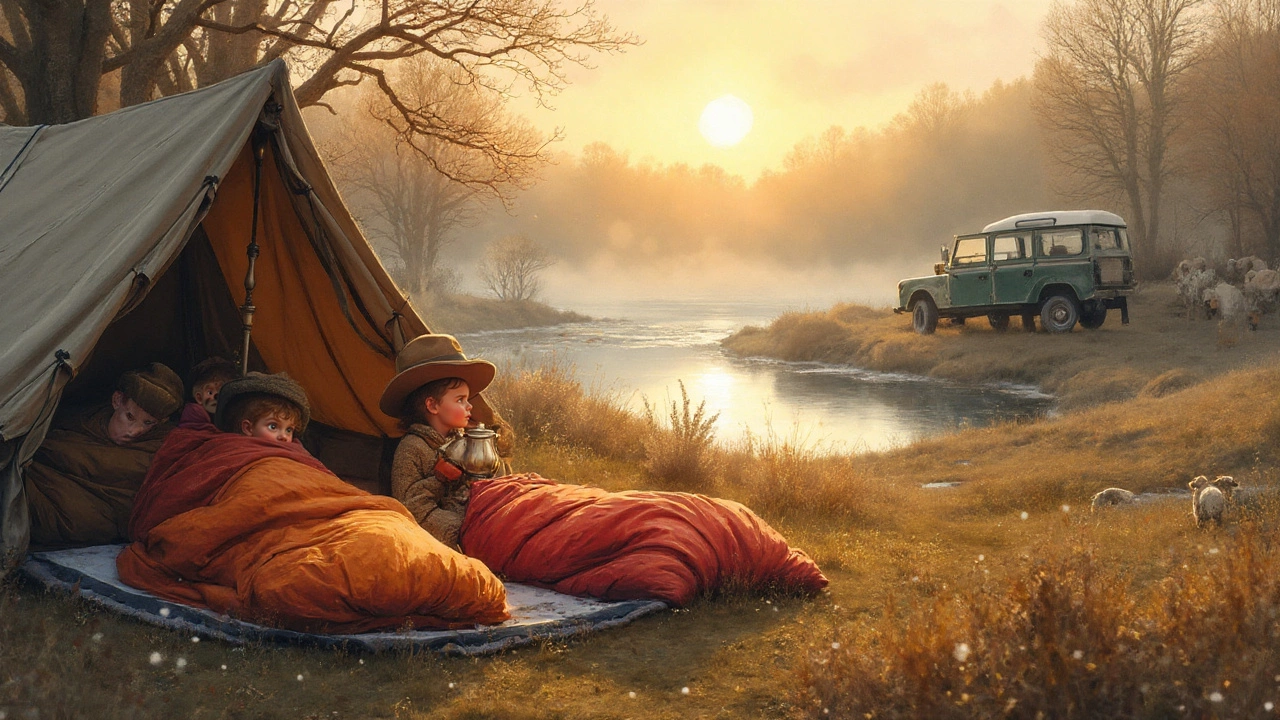
Cowboy Camp Like a Pro: Mistakes, Stories, and Little-Known Tricks
If you ask ten seasoned hikers about their first cowboy camp, you’ll get ten stories featuring dew-soaked socks, surprise animal visits, or a chilly wakeup call. The best lessons are learned when things go sideways, but you don’t have to repeat those mistakes if you follow a few tried-and-true tricks.
- Dew and Condensation: Even on dry, clear nights, heavy dew can turn your bag into a sponge. Choose a spot with some airflow—on a gentle slope or breezy ridge top—and spread your groundsheet underneath you. Some folks drape a lightweight windbreaker over their sleeping bag’s foot, since that’s where most moisture collects.
- Unexpected Visitors: Mice, foxes, even bold raccoons have been known to sneak up on sleeping campers. Keep food and toiletries zipped up and away from your bag. Don’t leave rubbish out for morning scavengers—no one wants a slug in their boot at sunrise.
- Choosing Your Spot: If the ground is uneven, always sleep with your head uphill. Your body will thank you, and you won’t slide down during the night. Use a small fold of clothes to prop up your knees or hips for extra comfort—it’ll stop you waking up stiff as a board.
- Backing Up Your Plan: Bring an emergency shelter or light tarp even if the forecast screams clear. Weather surprises happen. A sudden summer thunderstorm can blow in faster than you can say "cowpoke," so be ready to move if needed.
- Night Noises: The sounds outside can feel loud at first, but you’ll tune in fast. There’s nothing like hearing an owl’s hoo or the gentle scuffle of deer nearby. If it’s overwhelming, soft foam earplugs work wonders without cutting you off entirely.
- Stargazing & Night Sky: On clear nights, the Milky Way blazes overhead far brighter than it does through a tent’s walls. Use a stargazing app or just watch for shooting stars—a few folks say keeping your head uncovered lets your eyes adjust deeper and you’ll spot more activity than expected.
Sure, you’ll hit bumps. In July 2024, a group camping off Hadrian’s Wall in Northumberland tracked overnight lows to a teeth-chattering 3°C—one camper confessed to wearing every layer he packed (including two pairs of socks on his hands). But by morning, the chills faded in favour of the memory: a sunrise lighting up rolling hills that no one else saw.
Ever heard of "cowboy camping challenge nights"? Some online hiking groups hold mock cowboy camps in their gardens before a big trip, just to get the feel. It’s low-stakes, but sharpens your instincts about what gear, snacks, or positions will actually help you sleep. Not as glamorous as a windswept plateau, but every bit as useful.
If you’re heading out solo, throw a few tea lights or a tiny LED lantern in your pack for a bit of ambiance—and to keep the edge off the dark, especially if you’re breaking into cowboy camping for the first time. For many, the scariest part is simply adjusting to how open and exposed it feels. But that openness can also be your superpower.
True cowboy campers know: every night in the open is a little different. You learn to read the clouds, spot animal prints, remember where the wind blows coldest. Over time, you start to crave it. More than 60% of ultralight backpackers in a recent Ridgeway Gear poll said they prefer cowboy camp at least half the time in the summer months—less hassle, instant fresh air, and a sunset that ends up being all yours. Just remember, if you mess up, it’s usually a one-night discomfort—not a dealbreaker.
To wrap up, cowboy camping is as real as it gets: all it asks is a bit of planning, a sense of timing, and willingness to trade four walls for four billion stars. Once you wake up to a sky that changes colour while everyone else is zipped away, you start to understand why those old cowboys preferred the great outdoors to a stuffy bunkhouse. Give it a shot—and wait for the first time you see Orion while you brush your teeth, or feel the breeze before the sun hits your face. That’s cowboy camp. And it’s pure magic for anyone willing to try it even just once.
